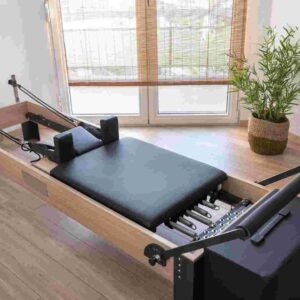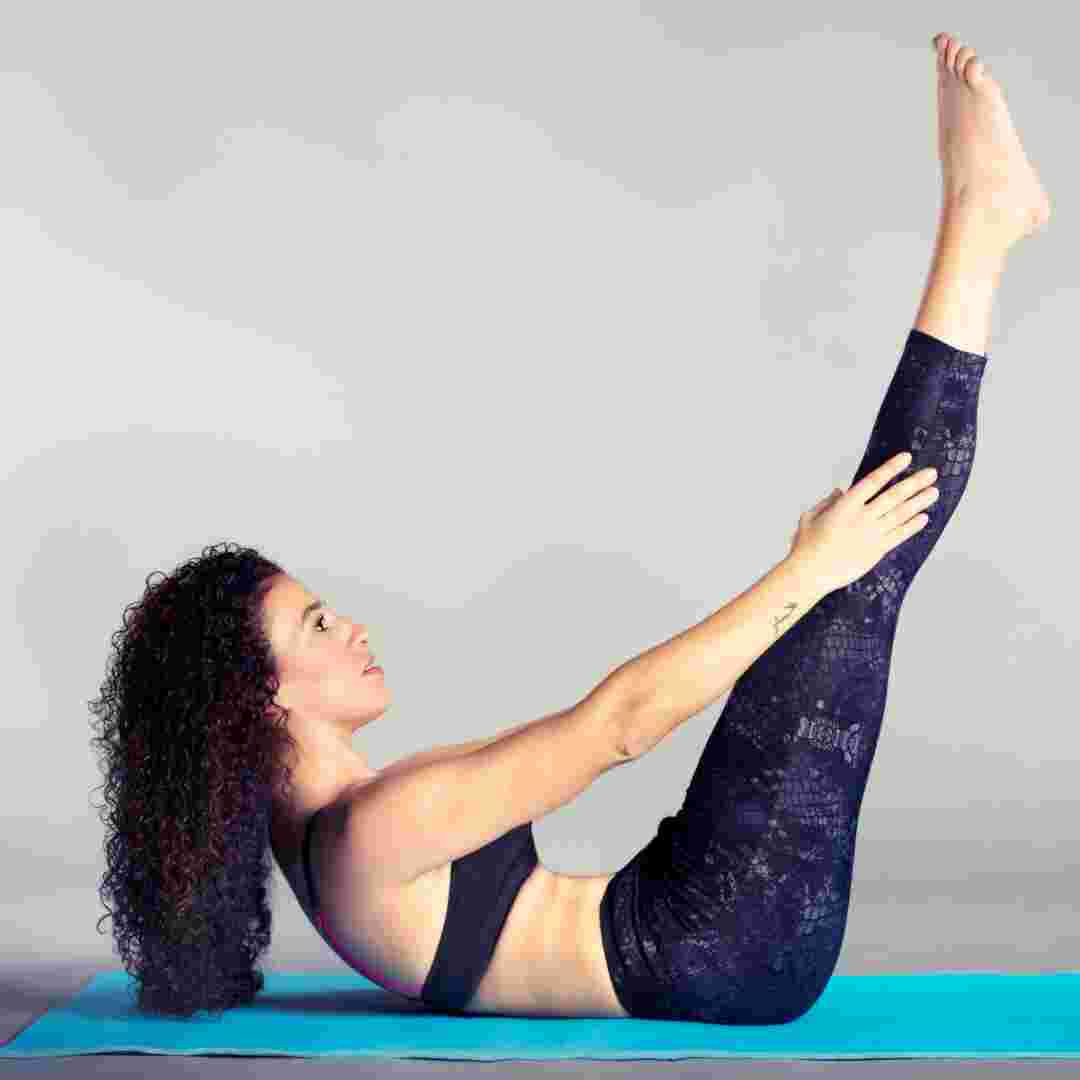Table of Contents
Introduction
Pilates Jumpboard Exercise Benefits
How to Workout with a Pilates Jumpboard
Differences between Pilates Jumpboard and Traditional Pilates
Q&A
Conclusion
"Elevate your Pilates workout with the Jumpboard."
Introduction
Pilates jumpboards attach to reformers. By adding leaping to Pilates, it provides a low-impact cardiovascular workout. The jumpboard is padded and non-slip for stability and safety during activities. It's a popular Pilates tool for all fitness levels.
Pilates Jumpboard Exercise Benefits
Pilates has been around for almost a century. Joseph Pilates, who felt mental and physical health were linked, created it. Pilates strengthens core muscles, improves flexibility, and raises body awareness in a low-impact workout. Jumpboarding is a popular Pilates exercise.
The jumpboard is linked to a Pilates reformer. A spring-loaded footbar ends this flat board. The jumpboard is ideal for low-impact cardio workouts that raise the heart rate without straining the joints.
There are several benefits of Pilates jumpboarding. It boosts cardiovascular health, a major benefit. Jumping on the board raises your heart rate and blood flow. This can improve your health and lower your heart disease risk.
Low-impact Pilates jumpboard movements are another benefit. This makes them comfortable on the joints and suitable for all ages and fitness levels. Pilates jumpboard exercises are gentle on your knees, ankles, and hips, unlike jogging or jumping.
Pilates jumpboard workouts tone and strengthen legs, glutes, and core while increasing cardiovascular health and being low-impact. Jumping on the board challenges your legs and core, which may tone and sculpt your muscles. This can slim and tone you.
Balance and coordination are improved with Pilates jumpboard workouts. Keeping your equilibrium and controlling your motions while jumping on the board helps enhance your balance and coordination. This is especially helpful for older persons at risk of falling.
Finally, Pilates jumpboard workouts are fun! Jumping on the board adds diversity to your workout programme. It can also reduce stress and boost happiness.
In conclusion, Pilates jumpboard workouts promote cardiovascular health, muscle tone and strength, balance, coordination, and pleasure. The jumpboard is a terrific training accessory for beginners and experts in Pilates. Try it and see the benefits for yourself.
How to Workout with a Pilates Jumpboard
The popular exercise Pilates has been around for almost a century. It is a low-impact workout that strengthens core muscles, improves flexibility, and raises body awareness. The jumpboard is a new Pilates tool. This article explains the Pilates jumpboard and how to use it in your practise.
The Pilates jumpboard attaches to a reformer. A spring-loaded footbar ends this flat board. Jumping workouts on the jumpboard can boost your heart rate and cardiovascular fitness.
A low-impact, joint-friendly workout is one of the Pilates jumpboard's key benefits. The jumpboard lets you do high-intensity exercises without straining your knees, ankles, or hips, unlike running or jumping rope. This makes it a great workout for injured or painful folks.
Another benefit of Pilates jumpboarding is improving balance and coordination. Jumping on a jumpboard involves core muscle engagement and balance, which helps increase body awareness and control.
How can you use the Pilates jumpboard in your workout? Jumpboard workouts include the basic jump, single-leg jump, and side-to-side jump.
Start the basic jump by lying on your back on the reformer and your feet on the jumpboard. Put your hands on the footbar and contract your core. Push off with both feet and jump back on the jumpboard. Repeat this practise multiple times.
Start in the basic leap stance but lift one leg off the board for the single-leg jump. Push off the board with your other foot and jump back on. Before switching legs, repeat this exercise numerous times.
Start the side-to-side leap by standing on the jumpboard with feet together. Jump one foot to the side while keeping the other on the board. Return to the centre and jump to the other side with the other foot. Repeat this practise multiple times.
Starting slowly with the Pilates jumpboard and progressively increasing intensity is key. Listen to your body and quit if you hurt.
In conclusion, the Pilates jumpboard enhances every workout. It improves cardiovascular fitness, balance, and coordination with a low-impact training. Jumpboarding into Pilates can boost your workout and help you reach your fitness objectives.
Differences between Pilates Jumpboard and Traditional Pilates
The popular exercise Pilates has been around for almost a century. Joseph Pilates, who felt mental and physical health were linked, created it. Pilates helps relax, relieve stress, and enhance strength, flexibility, and posture. The jumpboard is a new Pilates tool.
The jumpboard is linked to a Pilates reformer. It's a padded board for lying-down jumping workouts. The jumpboard provides a low-impact, joint-friendly aerobic workout.
Intensity distinguishes Pilates jumpboard from standard Pilates. The jumpboard adds cardio to low-impact Pilates routines that focus on controlled motions. This means you can burn more calories and raise your heart rate than with traditional Pilates.
Another difference between Pilates jumpboard and regular Pilates is the lower body concentration. The jumpboard targets the legs and glutes, whereas traditional Pilates works the whole body. This makes it ideal for lower-body toning and strengthening.
Mental benefits of Pilates jumpboard supplement physical benefits. Jumping can energise you and alleviate stress. Changing up your Pilates programme may be enjoyable and fascinating.
Start carefully and practise with a competent instructor if you are new to Pilates jumpboard. Jumping can strain joints, so adopt appropriate form to avoid injury. Your teacher can also tailor exercises to your fitness level and goals.
Pilates jumpboards are fantastic additions to Pilates. It provides low-impact cardio that is mild on the joints and tones and strengthens the lower body. Jumpboarding is a fun and effective way to mix up your Pilates workout.

Q&A
1. What is a Pilates jumpboard?
A Pilates reformer can be equipped with a jumpboard. Simulating jumping movements provides a low-impact cardiovascular workout.
2. How does a Pilates jumpboard work?
The user rests on their back with their feet on the jumpboard attached to the reformer. The board resists pushing off, providing a jumping motion that works the legs and core.
3. What are the Pilates jumpboard benefits?
Pilates jumpboards enhance cardiovascular health, leg strength and tone, and joint health with a low-impact workout. It can also make Pilates more tough and varied.
Conclusion
Conclusion: Pilates jumpboards enable low-impact jumping exercises to develop cardiovascular endurance, muscle strength, and coordination. It works for all fitness levels and can be used in Pilates exercises.


